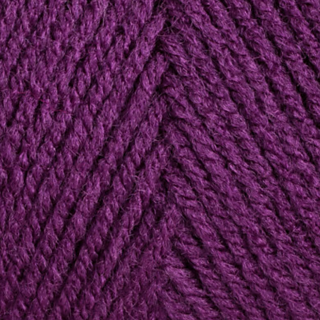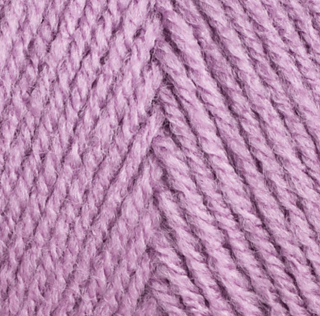Making a hat and cowl set for my niece, who just got married, to match the colors in her wedding bouquet -- the loveliest wedding on the simplest budget, that has ever been.
Her bouquet was the most beautiful I’ve ever seen -- and I don’t even like purple! Gorgeous!
General Brioche Guidelines
1) Brioche is Binary, like flipping a light switch. Each row the number and color changes.
• The stitches will alternate across: single, double, single, double.
• As you work the row, each stitch will change. If it’s single, make it double (hooded). If it’s double, make it single (decreased, no hood).
• Single stitches are one color.
• Double stitches are two-color — one of each: the slipped stitch, and a hood of the other color.
1B) While working the row, every stitch will involve two colors:
• The slipped stitch gets its hood: single —> double (and single color becomes two),
• You work the next stitch that’s already hooded: double —> single (and double color becomes one).
_ _ _ _ _ _ _ _ _ _ _ _ _ _ _ _ _ _ _ _ _ _ _ _ _ _ _
2) You will always slip the single, and work the double (either knit or purl, according to where you are). So every hooded stitch you work is k2tog or p2tog — knitting or purling two together.
_ _ _ _ _ _ _ _ _ _ _ _ _ _ _ _ _ _ _ _ _ _ _ _ _ _ _
3) YO in Brioche is not an increase! This is where people can get confused. (They always forget to tell you the simple, most important stuff!)
You use the same term, but it’s not the same technique. (It would be better to borrow the British term “YF”, or “Yarn Forward.”)
The YO always starts on the side facing you (the front for the current row), and makes a hood over a single, slipped stitch.
Every YO makes a bridge, or hood, over the slipped stitch: It’s always just before the slipped stitch, drapes over the slipped stitch, and ends on the side away from you (the back for this row), after the slipped stitch. Always.
If the stitch that follows the sl1YO is a BK (Brioche Knit, or Bridge Knit):
Bring the yarn to the front, slip the single stitch, drape yarn over the slipped stitch to the back, and end in the knit position.
If the stitch that follows the sl1YO is a BP (Brioche purl, or Bridge purl):
Start the hood in the front (you’re already there, in purl position), slip the single stitch, drape yarn over the slipped stitch to the back, bring yarn under the needle to end in front, in the purl position.
(I made up a term -- I call it “Bridge Knit” or “Bridge Purl.” “Brioche Knit,” means nothing to me, but Bridge Knit makes it very clear. It can be helpful to think of it that way. And think of “sl1yo” as “YFsl1yo”.)
_ _ _ _ _ _ _ _ _ _ _ _ _ _ _ _ _ _ _ _ _ _ _ _ _ _ _ _ _ _ _
4) You work across, working every other stitch. Then you slide back and start again, this time working all the ones you skipped before, with the other color. Then you turn, and do this again, with the colors in reverse.
Row 1: Do the brioche knits (CC) (slide, do not turn)
Row 2: Do the brioche purls (MC) (then turn for other side)
Row 3: Do the brioche knits (MC) (slide, do not turn)
Row 4: Do the brioche purls (CC) (then turn to repeat this sequence)
5) Brioche knitting is very stretchy, so I’m using a size 7, one size smaller than called for in the pattern or for the yarn.
 truefeather77 >
truefeather77 >  notebook > projects > Wedding Orchids Brioche Set: Hat & Cowl
notebook > projects > Wedding Orchids Brioche Set: Hat & Cowl 




324317 projects
stashed
111688 times


 handspun
handspun queue
queue favorites
favorites friends
friends needles & hooks
needles & hooks library
library